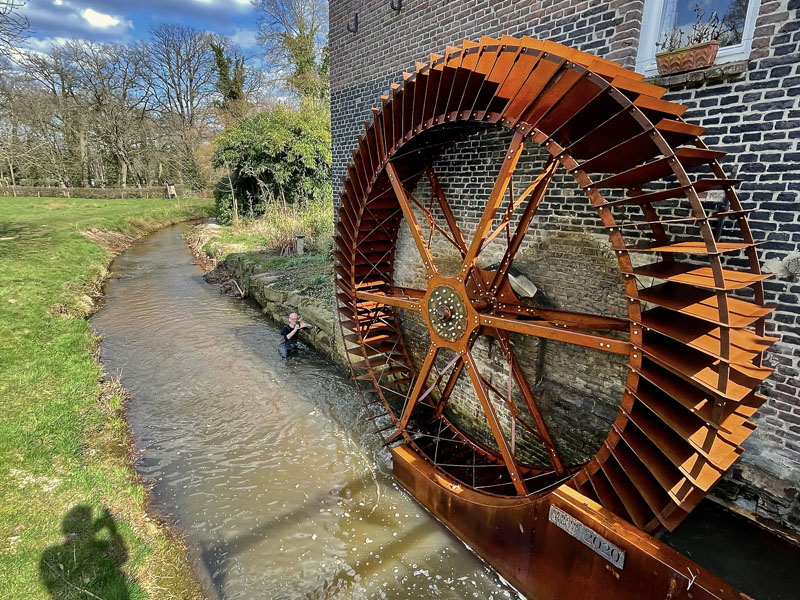SAGEBIEN WATER WHEEL

At the watermill in Geijsteren (NL), an old undershot wheel has been replaced by a Sagebien water wheel. The Sagebien water wheel is not often built anymore and that is a shame. The Sagebien water wheel is characterized by a low speed, high torque and a limited flow per meter wheel width. But there are also obvious advantages. Due to the limited water speed, the losses are minimal, which results in a superior efficiency of more than 90%; that is not surpassed by any wheel. This wheel is also very suitable at locations where the level of the drainage water can become high. And perhaps not unimportantly: the Sagebien wheel has a graceful beauty due to its many blades.
The flow rate on the Oostrumse beek in Geijsteren is between 50 and 200 l/s. At the mill, the head is between 1.1 and 1.2 m. At extremely high water in the river Maas, this head can even disappear completely. The width (and therefore the weight) of the wheel is limited by the single-sided suspension of the wheel. This is not common, but beautiful. Ultimately, a width of 73 cm was chosen. The radial speed is at 0.64 m/s on the high side for a Sagebien wheel, but in practice this appears to work fine. With a diameter of 4.93 m, the speed is 2.5 rpm: one revolution in 24 seconds.
The transmission to the generator consists of an existing chain transmission, an industrial gearbox and a flat belt transmission. The chain was already there and is perfectly capable of reducing the high torque, making the gearbox lighter. The flat belt between the gearbox and the generator is in place to avoid a 90 degree angled transmission and to absorb any synchronization forces during start-up. A flat belt has a higher efficiency than a V-belt and is also quieter.
A 6-pole asynchronous type of 1.9 kW has been chosen for the generator. This type of generator runs more or less synchronously with the national grid. At start-up, synchronization is relatively easy since a speed close to the synchronous speed is acceptable for coupling. The asynchronous generator then quite quickly pulls the wheel in the synchronous speed.
The efficiency from water to electricity, at 71%, is relatively excellent for such a small installation. The annual yield is estimated at 10,500 kWh. Still enough for 3 to 4 households or 60,000 km with the Tesla.